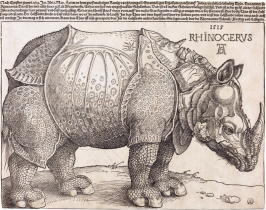Reading Nancy Marie Brown's Looking for the Hidden Folk: How Iceland's Elves Can Save the Earth
Why do Icelanders believe in elves?
Finally, a convincing answer.
If, as I did, you come to Nancy Marie Brown's Looking for the Hidden Folk: How Iceland's Elves Can Save the Earth looking for tales of Iceland's huldufólk—the hidden people—you'll be disappointed. Chapter after chapter, you'll think: Ah, now we're going to get to the stories. Chapter after chapter, you'll be wrong.
But don't let that put you off. Chapter after chapter, you'll find that you keep reading anyway. Why?
If tales of elves are what you want, there are plenty of books of those out there. This book, though, is doing something else.
Robert Kirk's The Secret Commonwealth of Elves, Fauns, and Fairies was published in 1815. Since then, the English-reading public has seen no book of elvish theory.
Not until now.
Oh, there's no shortage here of elf-tales, to be sure. Many of them will sound familiar. You will have seen many different variations on a few similar themes before: the international press loves stories about Icelandic elfdom.
You know the kind of stories that I mean. The new road necessitates the removal of a boulder said to be the home of an elf. Locals keep warning work-crews that there will be trouble if the boulder is moved, but in the end—after endless break-downs of machinery—the elf-stone is shifted. As predicted, a series of terrible accidents in that particular place ensue.
Finally, the authorities wise up. They replace the boulder and re-route the road. The accidents stop, forthwith.
When it comes to the elves of Iceland, and media stories about them, one can't help but think of the war in Ukraine. When war comes to some Third World place where black or brown people live, well, it's tragic, but that's just how it is.
But when war comes to a First World country and people that look like us—i.e. "white" people—then we feel it personally.
Same with exotic beliefs. When they're held by people of color in some exotic locale, well...that's just what those people do.
But when Icelanders—surely the very whitest of white people—start believing in things like elves, well now: that's press-worthy.
Why, Brown asks, do we privilege some beliefs over others? Why does it seem perfectly ordinary when someone believes in, say, “God,” but weird-ass when they believe in elves?
Surely, this is a question well worth the asking.
For some reason, I'm not the kind of person that gets consulted when they're doing surveys. (Maybe that would change if I started answering calls from numbers that I don't recognize.) But whenever I read the results of surveys, I can't help but ask myself how I would answer these questions.
Usually, my response would be to ask for clarification. Surely we all stand to benefit by a clearer definition of terms.
“Do I believe in elves? Well, that depends. What do you mean by 'elves'? What do you mean by 'believe'?"
That's what Nancy Marie Brown is doing in Looking for the Hidden Folk.



















